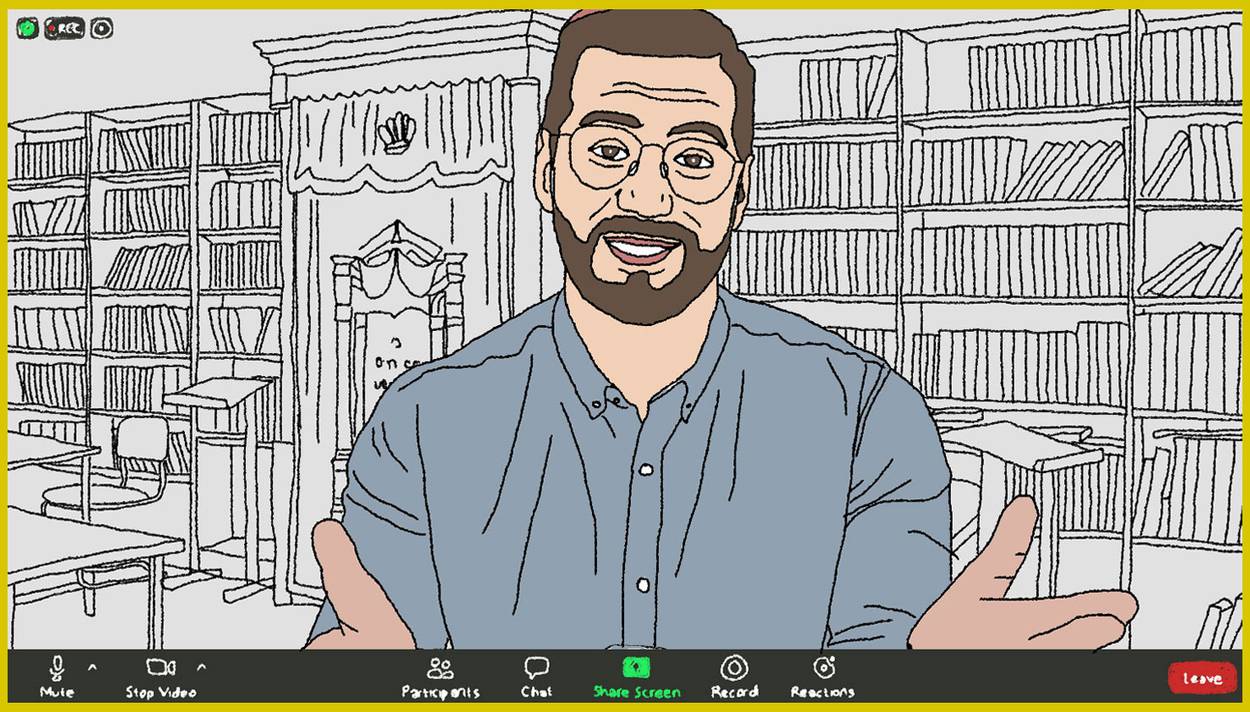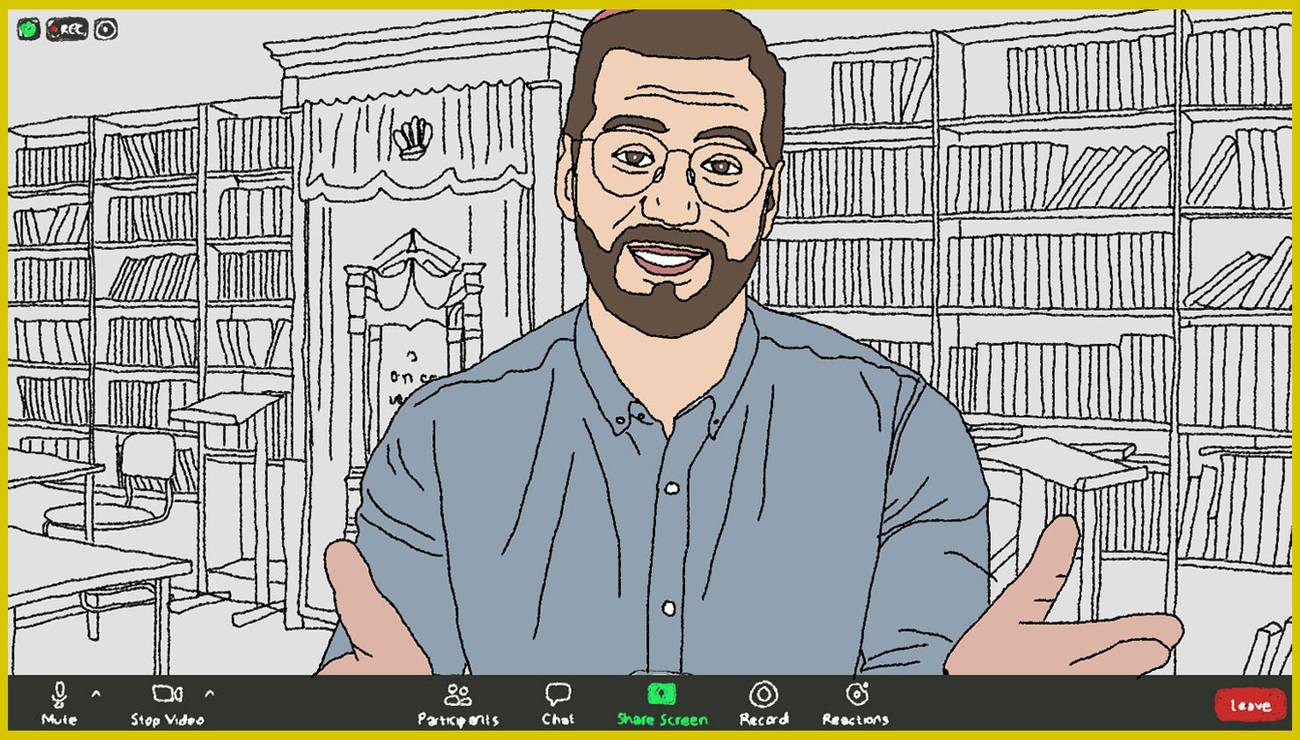The Temple of Zoom
Even though in-person services have resumed, synagogues across the country say remote options are here to stay

Tablet Magazine

Tablet Magazine

Tablet Magazine

Tablet Magazine
Before the COVID-19 pandemic, Temple Micah held Shabbat and holiday services in its sanctuary, while simultaneously livestreaming for remote attendees. But in March 2020, when the world entered COVID lockdown, the 670-unit Reform synagogue in Washington, D.C.—like non-Orthodox synagogues across America—quickly moved congregational life to Zoom to keep congregants engaged and maintain community.
Since reopening its doors after the pandemic, Temple Micah has upgraded its technology: A sophisticated system incorporates livestream and Zoom for Shabbat and holiday services, enabling worshippers to recite an aliyah or lead the congregation in prayer over Zoom. Adult education, lunch and learn, guest lectures, as well as committee meetings—including the annual congregational meeting—are hybrid, both in-person and over Zoom. “Adult education has increased since COVID. Zoom offers possibilities for reaching people because they live at a distance, do not wish to drive, or are simply more comfortable at home,” said Rabbi Daniel Zemel, who envisions using Zoom for many years to come, including in areas not yet imagined. “Zoom is here to stay and I think it is very important.”
Nor is Temple Micah alone. The Synagogue Studies Institute reports that 85% of respondents to its 2023 FACT/EPIC survey offer online worship, versus 24% before the pandemic. Meanwhile, 70% of respondents—representing Reform, Conservative, and Reconstructionist congregations across the U.S.—expect to still offer an online/virtual worship option in five years; more than 59% use Zoom for study sessions and approximately 60% for administrative meetings.
Additionally, 29% of the FACT/EPIC survey respondents reported a 25% increase in worship attendance, which the Synagogue Studies Institute attributes to the online virtual option. “I hear over and over again from rabbis: When do we get back to normal?” explained Rabbi Aaron Spiegel, president of the Synagogue Studies Institute. “My answer is: This is normal. We have been losing members and seats in pews for 20 years, and all of a sudden we are gaining participation and engagement. If we don’t embrace this, it is counterintuitive. We have to be responsive rather than dictate that this is the right way to do it.”
Indeed, even though the pandemic is officially over, synagogues continue to use the online platform for worship, classes, programs, and meetings even though rabbis would prefer in-person gatherings.Today, when not faced with a life-threatening pandemic, synagogues have also become more strategic about implementing technology where it adds real value: Life cycle events such as b’nai mitzvah are now held in person (with online technology such as livestream also available) as are youth activities, including religious school education. According to the Synagogue Studies’ findings, 50% of religious education is in person as well as 45.5% of youth activities.
At Temple Sinai in Summit, New Jersey, in-person participation is a priority—although services are also livestreamed, with Zoom used selectively for some committee meetings and adult education classes. “The in-person experience is more communal and nurtures community in terms of relationship building,” said Rabbi Erin Glazer of the 400-family Reform congregation which had shifted to Zoom during the pandemic. “Being part of a community requires participation and presence.”
Just because something is technologically possible, it may not meet the synagogue’s goals and priorities, cautions Glazer: “Think about the goal of each experience and program differently so you make the right choice for each gathering.”
By aligning Zoom with their goals, synagogues can reap benefits. “It’s all about making Judaism and Jewish practice meaningful, and removing barriers to participation,” said Rabbi Susan Elkodsi of the Malverne Jewish Center, a small, pluralistic congregation in Malverne, New York, which has experienced greater participation in Shabbat services and classes since implementing Zoom in 2019 to accommodate its elderly congregation. At Or Hadash, a Reconstructionist congregation in Fort Washington, Pennsylvania, Zoom has created a sacred space for meaningful discussions in its spiritual growth havurah, Torah study class, and book club, explains Rabbi Alanna Sklover. And Zoom has enabled a Jewish Renewal congregation—MOSh: Minyan Oneg Shabbat—to expand its reach across North America from a small gathering of local residents who met pre-pandemic twice a month in a rented D.C. church to a “Zoomagogue” that meets online three times a week for prayer, study, and meditation. “We are a welcoming community of spiritual God-wrestlers who have found a spiritual home online that is filled with joy and contemplation that is ignited by music and Torah,” said Rabbi Mark Novak, founder and spiritual leader.
In any case, it’s often a balancing act to encourage in-person gatherings and also satisfy those desiring online connection. “Being in-person is our top priority, but allowing access to community online is an important value,” explained Rabbi Andrew Paley of Temple Shalom, a 600-unit Reform synagogue in Dallas where most activities are now in-person: Worship services—which had switched from livestream to Zoom at the outset of COVID—are back in the sanctuary and also livestreamed; the rabbi’s weekly Torah study class is hybrid (20-30 in-person attendees and 15-20 on Zoom). “Forcing people into a singular modality of experience and community is probably not the most conducive for helping the variety of people out there. You want to extend as many lifelines to people as you can.”
Rabbi Josh Breindel of Congregation Beth El of the Sudbury Valley agrees. “A significant portion of our congregation values the opportunity to connect online. Everyone agrees that coming in person is a fuller experience but we live in an imperfect world.”
At the 225-unit Reform synagogue in Sudbury, Massachusetts, 99% of worship and study is hybrid. Shabbat and holiday services are in person, on Zoom, and livestreamed. Former members who have moved out of town have been able to reconnect and come to study. New congregants from across the U.S. have also joined as virtual members. The majority of congregants now attend worship services in person with a choral microphone positioned so that those online can hear the harmonies from the congregation; meanwhile online attendance has remained stable.
Since March 2020, the synagogue’s Thursday morning “Hasidic Tales” study group has met exclusively on Zoom. Members hail from across the U.S. to study and discuss Martin Buber’s classic work. “It surprised me that you can feel so close to people just in little boxes and still have a discussion and learn things,” explained congregant Susan Phillips, who finds online study more convenient for her schedule, especially since she lives approximately 12 miles from the synagogue.
Zoom has also enabled Congregation Beth El to become more inclusive and expand programming: Congregants with mobility or health issues can participate fully, and programs now feature speakers and teachers from across geographical zones. “This allows us all to benefit from having as many voices as possible in our studies, programs, and services,” explained Breindel. “I miss having the regular large number of people to hug and eat together but I feel as this technology continues to develop, we will offer our members new ways to live Jewish lives.”
We use Zoom because it creates community.
Nearly a decade ago, Congregation Shaarey Zedek, a 1,000-unit Conservative synagogue in Southfield, Michigan, began livestreaming services so snowbirds and others physically unable to attend could stay connected. When the pandemic struck, the suburban Detroit synagogue immediately moved from livestream to Zoom.
Post-pandemic, though, its goal is to rebuild community by prioritizing in-person gatherings. Most activities are back in person including: Shabbat and holiday services (with livestream), adult education, and lifecycle events. “Judaism at its core is relational, based on a relationship with our fellow Jews and those in need,” emphasized Rabbi Aaron Starr whose younger son celebrated his bar mitzvah this past spring in the sanctuary, unlike in May 2020 when his older brother celebrated a Zoom bar mitzvah with only immediate family present.
“We often make decisions based on convenience. I hope that we can elevate those decisions to be mission-driven now,” emphasized Starr. “When we use technology, let’s keep the mission of individual technology and synagogues in focus to find meaning in serving God together, and be supported and sustained by our relationships with each other.”
Shaarey Zedek minyanim are either hybrid or on Zoom, depending on the day of the week. “If I had to go to synagogue, I couldn’t have kept it up … To me it was very important to participate from a religious, emotional, and healing standpoint,” said congregant Tammy Gorosh, who attended daily minyan twice a day from home to recite Kaddish for her brother and mother who died within a few months of each other.
In any case, Zoom minyanim are likely to stay. “We want to remove any and all obstacles for people in prayer, especially if they are saying Kaddish,” said Starr. “People appreciate the convenience of online. Since offering Zoom for weekday minyan, we have always had a minyan.”
Beth El Synagogue in St. Louis Park, Minnesota, implemented livestream for worship services approximately eight years ago. But in March 2020, the 1,000-family Conservative synagogue switched to Zoom. “We had a sense that it was what we needed to do. We did everything virtually. We also intentionally said that we would try to get people to come back in person,” said Rabbi Alexander Davis.
In-person worship Shabbat services have now resumed, with both Zoom and livestream available. “We use Zoom because it creates community. When people can see each other and join in a virtual Kiddush after Shabbat services, they connect and deepen their relationships,” explained Davis. Meanwhile, livestream provides a Shabbat experience for those desiring privacy such as residents of care facilities. For logistical reasons, High Holidays will be livestreamed.
Weekday morning minyan is hybrid, while evening minyan is exclusively on Zoom. Importantly, Zoom has made daily minyan more accessible, upping regular attendance and regularly ensuring a prayer quorum, while enabling geographically dispersed families to recite Kaddish together; for instance, Beth El congregant Rivel Greenberg recited Kaddish online for her husband, Phil, twice a day for 11 months—often joined by her children and grandchildren scattered across the U.S.: “Having my kids’ faces on the screen meant a lot. This afforded me family and for that I am grateful.”
During minyan, Davis asks those reciting Kaddish to share a memory of their loved one. “There are some ways in which the technology creates an intimate space that was surprising to me,” he said. “The screen invites them to share more in person. Everyone is looking at the one screen and everyone is present for that one story. It creates an intimacy that I hadn’t quite experienced in person.”
Looking forward, Davis expects to use Zoom selectively for study groups, meetings, programs, and services until a newer technology comes along. The goal, though, is to make judicious use of technology to serve its purpose of building and strengthening community. “If we don’t have real in-person experiences of sustaining community, community won’t be sustainable.”
As for the future, Spiegel summed it up: “I think that what this says is that people now have a choice … Find what works for them and connect. If we are not attuned to what our congregants want, we will lose them ... The essence of Judaism—the communal part—is at risk.”
Become a member of Tablet and access special events, community conversations, and opportunities to connect with fellow readers.
Paula Jacobs is a writer in the Boston area.